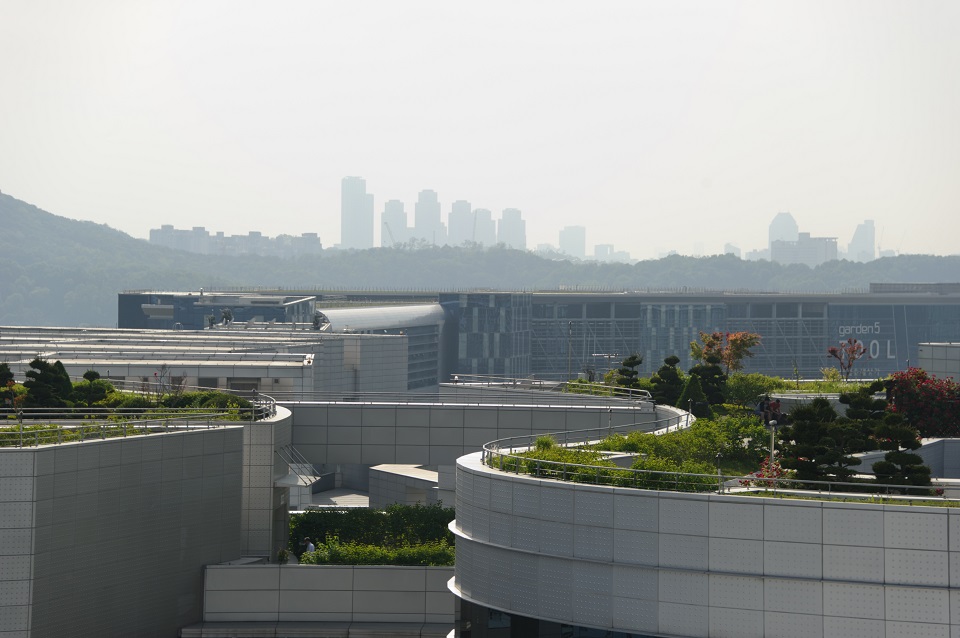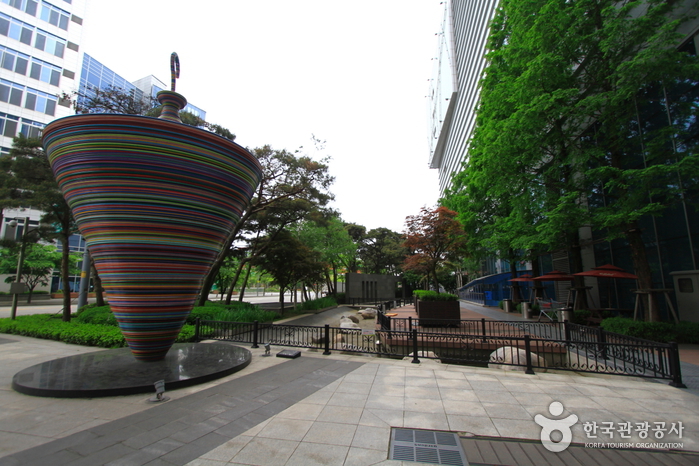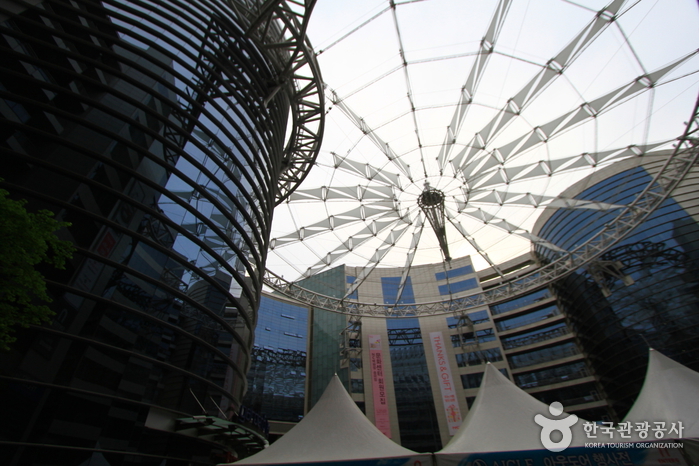Filtered By: Lifestyle
Lifestyle
LOOK: Seoul elevates gardening to high art
By PARK CHAN-KYONG, Agence France-Presse

A photo taken on May 21, 2015 shows the rooftop garden of the 'Garden 5' shopping mall in Seoul. 'Skygardens' are changing the face of the South Korean capital, one of the world's most densely populated cities, with rooftop vegetable plots and a garden as big as three football pitches 10 storeys up. AFP PHOTO/Danny Kim
With help from the municipal government, otherwise largely drab buildings are being crowned with flower beds, allotments and trees, where the scent of fresh blossoms in the springtime can briefly mask the fumes from the traffic below.
The project has produced one of the largest rooftop gardens in Asia, Garden 5, which is spread across the top of four 10-storey buildings and linked by skywalks, with a total surface area equal to three football fields.
Inter-M Corp., a broadcasting and audio equipment maker housed in a grey, nondescript, seven-storey office building in northern Seoul, decided to convert their roof several years ago.
Completed in late 2013 at a cost of 110 million won ($100,000)—half provided by City Hall—the 450-square meter (4,840-square foot) garden boasts azalea, lilies, maple trees, herbs and two small pavilions.
Company spokesman Bae Seung-San said staff used it to unwind, while potential customers were taken to the roof as part of a sales pitch.
"When we have foreign buyers, we throw barbecue parties here, with music playing on our equipment," Bae said.
The municipal financial support comes with a rider—any garden must be properly maintained and opened for public use within five years of its completion.
The green fund

Garden 5. Korea Tourism Organization
"We need more green, but don't really have the budget to buy the land for urban parks," said Bang Seong-Weon, a municipal official in charge of the Green Roof Construction program.
"If you green the rooftops, land prices cease to be an issue," Bang said.
Home to 20 percent of South Korea's 50 million people, Seoul is a modern, thriving city with a population density nearly twice that of New York and eight times greater than Rome.
Largely destroyed in the 1950-53 Korean War, Seoul was rebuilt at a time of rapid industrialization and laissez-faire urban planning that resulted in an uninspiring landscape of cookie-cutter apartment blocks and utilitarian office buildings.
In the last 10 to 15 years, efforts have been made to revitalize the city architecturally and environmentally with varying degrees of success.
Bang is keen to highlight the economic as well as environmental benefits of the roof gardens which both absorb heat and act as insulators for buildings, reducing energy needed to provide heating and cooling in Seoul's freezing winters and hot, humid summers.
"And they improve the landscape, giving people a sense of the changing seasons," he added.
A roof for all seasons

Garden 5. Korea Tourism Organization
"I've never seen anything like this before," said Choi Da-Yeon, a 20-year-old student as she strolled among the garden's flower beds and trees with her boyfriend at Garden 5.
"We don't have enough green spaces in Seoul. Somewhere like this give you a real breathing space," Choi said.
A leading proponent of the rooftop movement is Han Moo-Young a professor of civil and environmental engineering at Seoul National University.
At a cost of 200 million won provided by City Hall, corporate donations and his own money, Han laid a rooftop flower and vegetable garden that covers an 840-square meter rooftop on one of the main campus buildings.
University staff, local residents and an organization for disabled people tend the vegetables growing on one half of the roof, and the flower beds on the other half which also host six beehives.
"We hold music concerts here and make kimchi together with students and residents. It's a community," Han said.
"You see the bees and butterflies and you get that sense of being in nature," he said.
Seoul Skygarden
While the rooftop project was designed as a cooperative effort involving government, corporates and individuals, the Seoul authorities are about to start work on a far larger undertaking to convert a half-mile stretch of abandoned 1970s highway into an elevated park.
The city has engaged Dutch architects MVRDV to design the Seoul Skygarden, due to be completed in late 2017, partly inspired by the success of New York City's elevated High Line.
In total, the pedestrian park spanning Seoul's main station will be home to 254 species of flora, as well as an nursery arboretum to provide cuttings and saplings that can be transplanted to other rooftop gardens around the city.
Exposed to strong sunlight, the elevated gardens need more care and frequent watering, while taking a bit more effort to get to, acknowledged Seo Jin-Sook who grows vegetables atop the university.
"However, looking at the beautiful scenery on top of the rooftop while gardening is a healing experience for me," she said. — BM, GMA News
More Videos
Most Popular




